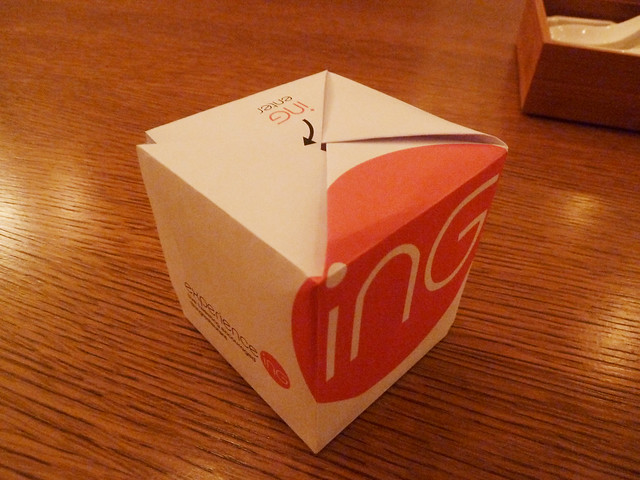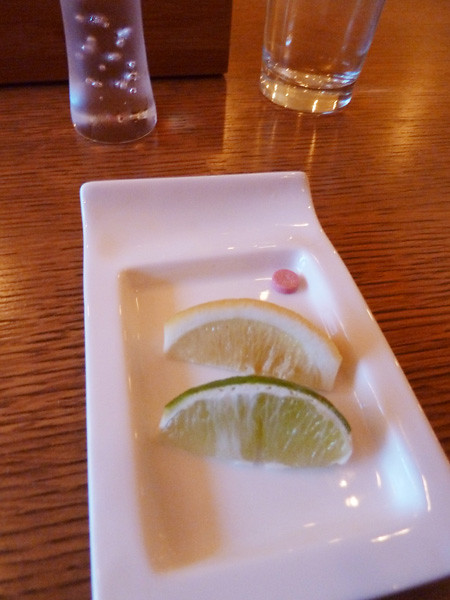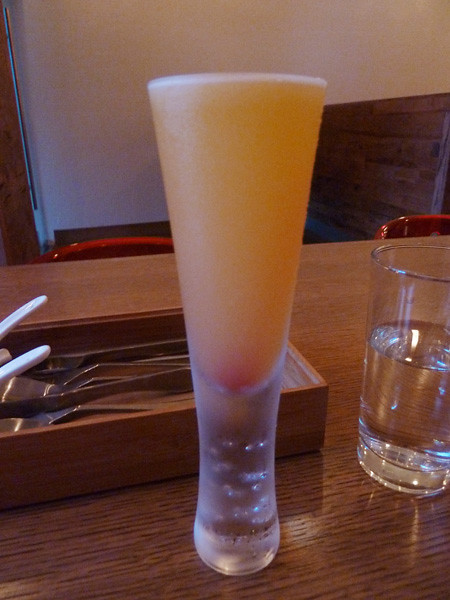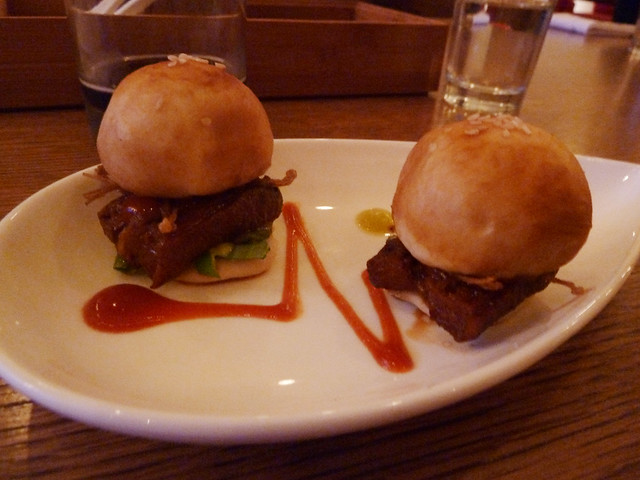
If the Miracle Berry didn’t exist, Homaro Cantu would have had to invent it.
Cantu has long been seeking something beyond mere food, a kind of altered-reality experience where he could be the Timothy Leary opening new doors of perception. The problem is that dinner is, in the end, dinner, not a higher consciousness, and his claims of changing the world with food wind up overselling, and thus diminishing, the experience of his often genuinely clever and witty food. Cantu is working in the genre of other food-magicians descended from El Bulli, perhaps closest to Heston Blumenthal who takes a particular magician’s delight in misdirection, making a dish that looks like one thing but turns out to be another. But Blumenthal is David Copperfield, staging elaborate tricks to make you laugh with delight, while Cantu seems to want to be Uri Geller, trying to make you believe it actually happened, right there on Mike Douglas.
Which is why the Miracle Berry is such a natural for him. For once, the trick genuinely doesn’t happen on the plate, but in your mind. Dropping a Miracle Berry tablet— the experience can’t avoid LSD connotations, and at iNG, shows no signs of wanting to— produces an effect by which sour things are perceived as sweet. It’s less pronounced than advertised, perhaps, but it’s there— you’re given slices of lemon and lime on which to test your tongue once you’ve dissolved the tablet, and lemon goes from lemon to tart lemonade, basically.

The problem is that having once taken the tablet, you’re stuck on the other side of the door— any dish or cocktail you’re given will taste like its Miracle Berry-ized self, without necessarily a frame of reference for the original dish. The Miracle Berry “Flavor-Tripping” menu at iNG confronts this problem with varying degrees of success.
I never ate at Otom, so I don’t know how much iNG resembles its predecessor in the space, though what its go-go boots-white and red interior did remind me of was Mod, the long-ago restaurant where The Violet Hour is now. The amuse which arrives inside your folded paper box of a menu seems to be there just to match the room, but what comes next is well designed to show the effect: a cocktail which tastes (somewhat) like a margarita before you suck the berry, and (somewhat) like a tequila sunrise after. It makes the point, though perhaps out of a desire to show up The Aviary a couple of doors down, it tries too hard. Some of The Aviary’s cocktails are meant to change flavor as they steep in their ingredients, like tea— a naturalistic, and probably pretty subtle, effect. iNG not only short-circuits the process with the Miracle Berry but with a small tube of cherry juice, which spills into the drink as you lift it to drink. By the last sips cherry flavor has sledgehammered the subtler Miracle Berry effect; less would have made more of the effect.

The first real food course, a sort of deconstructed Beausoleil oyster covered in uni and frozen-grated foie gras, doesn’t seem to draw on the Miracle Berry effect, but its drink pairing is quite wonderful: a taste of Dogfish India brown ale, in which the sweetness of a brown ale surges to the front under the berry’s effects. In this case the extra twist is well chosen: it’s served in a smoked glass, a neatly economical version of Blumenthalesque scent dishes involving things like smoking hay on your plate.
I got two of iNG’s baozi, meltingly tender pork buns, so I would have loved to have tried one before and one after the Miracle Berry. Not that it would likely have made much difference; these are so tasty that you almost want to tell Cantu to forget the fine dining stuff and just get a baozi truck out on the streets as fast as possible.

The next dish, a version of Nobu’s miso-black cod dish (I swear, Nobu by this point is the Colonel Sanders of black cod), seems a less wise choice for the Miracle Berry— already on the sweetish side, it becomes downright candy-coated under the Berry’s influence. (I’d rather have had a puttanesca sauce or something equally savory to serve as the Berry’s foil by this point.) While a duck dish with mint and white chocolate in its sauce (not so I could tell) was a very pretty plate, but what the Miracle Berry contributed to it (and by this point I’d been given a refresher Berry) wasn’t clear to me.
Far more impressive was its effect on the drink pairings with these dishes— a slightly fruit-forward pinot noir was like sipping a fine balsamic vinegar, while a dry Riesling came off for all the world like an ice wine. Dessert followed— but as it’s a charming visual joke, I won’t spoil it.
So did I see an altered reality, or a possible future food? I doubt it, though the Miracle Berry’s use as a sugar substitute that works on the mind rather than the food is certainly intriguing, albeit more from a food-business standpoint than a culinary one. I look at the meal more prosaically: as a triumph of showmanship. The fact is this meal, minus the Miracle Berry, is nothing strikingly unusual— all very nicely done in an Asian-minimalist way, subtle and a little sedate for my tastes, one you can imagine having any number of places (especially the black cod). The Miracle Berry and the whole presentation around it turns a pleasant meal into a mindbender in which you think hard about every course, tasting and testing and waiting for transcendence. If it never arrives, you’ve still made more out of this meal than it would have on its own in a more conventional restaurant. As I said before, Cantu has found a magic trick that takes place not on the plate, but in your head.
Tags: Homaro Cantu, iNG, Miracle Berry

 Posted in
Posted in 




